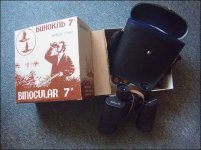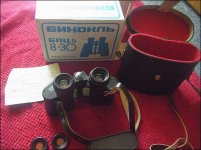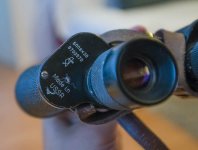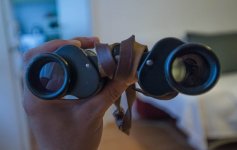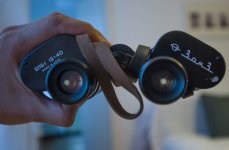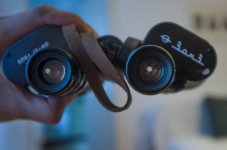. Regarding Russian binoculars after the breakup of the Soviet Union. The factories were left floundering without state support.
So they reduced the quality of the optics and also the quality-control both by substantial amounts. They probably still have the ability to produce fine optics but could not commercially compete as they were basically hand assembled and handmade.
However, to say that Chinese binoculars are better is in my opinion just not true.
There was wholesale dumping of Chinese goods including binoculars, with I think a main aim being to destroy other countries optical industries. In many cases these early Chinese binoculars were basically throwaway binoculars as if you even bumped them they would lose collimation and be useless. They may look good externally but they are in fact not much use at all.
The worst Chinese binoculars are worse than anything any country has ever produced. Even the slightly better cheap end binoculars have a reject rate of 50% or so. In other words 50% and in some cases 98% of these Chinese binoculars sold should have gone straight to the garbage and never left the factory. In many cases there seems to be no quality control whatsoever.
The 98% rejects apply to tiny binoculars with 100 times magnification. You would be lucky to find 2% that work near the top magnification.
I've seen and carefully examined a 10×50 Chinese binocular in the local supermarket that is without doubt the worst binocular I've ever seen. It was being sold for £10 but you would need to give me £10 to take it. I should probably have bought it just to show how terrible a binocular can be. No Russian binocular, however bad, could reach this nadir.
And there are still some Russian or ex-satellite country binoculars that are very useful and interesting.
For instance, the Yukon 30×50 binocular that uses mirrors instead of prisms has extremely high resolution and easily out resolves the Canon 18×50.
In addition, the Yukon spotting scope 6x to 100×100 mm is a very useful lightweight spotting scope that is easily supported on a good quality 2.5 kg photographic tripod. It is fully usable at 100 times. It is a folded refractor and unusual design. It uses mirrors not prisms. I think that it is important to test one of these before you buy it as Yukon products vary quite a bit in quality. I'm not sure which satellite country they are made in and they may use Chinese glass rather than Russian.
And even the modern 8×30 is probably very useful even if not up to the quality of older versions.
As to the Minolta standard binoculars. I used the 10×50 as my main binocular for 15 years. Its main asset is its very wide field of view, but good modern binoculars are better in most respects except that they don't have this very wide field of view. It is certainly not up to military standards as regards ruggedness.
It is pity that an updated version of the Minolta standard is not produced with modern coatings and the same extra wide-angle field.
Chinese binoculars made for people like Nikon etc are very good and good value and Chinese optics are often very good nowadays. But there is still an awful lot of junk being made in China.
Ukrainian optical enterprises produce optical devices only for military purposes in small quantities, optical civilian devices died in the mid-90s.
Russian optical enterprises produce optical devices and saved production base, technology in the mid-90s.
Chinese manufacturing companies such as Kunming, United Optics and etc. produces perfect optical products, with a full cycle of production and application of multilayer optical coated.
Little Known Chinese manufacturing companies:
http://www.mloptic.com/English/contact/contact.asp
http://www.jnoec.com/en/contact.asp
Yukon 30 × 50 used in combat in eastern Ukraine, the reviews are very bad.
I have the Canon 10x42, 15x50 and tell you they have an amazing sharpness and 3D image in contrast to the Belarusian junk Yukon 30 × 50.
In Canon 10x42, 15x50 you will see more details and situation than in Yukon 30 × 50 on a tripod.
The actual fighting in the east of Ukraine proved that detection and identification of the object is the main task before striking.
Come to Ukraine and you see everything, I'll arrange a tour of a few optical enterprises.
Ukrainian market of binoculars has a lot of vendors, from cheap Chinese fake to Nikon, Canon, Pentax, Swarovski, Leica, Carl Zeiss, etc.
By the way, how do you feel about binoculars that were made in the 70-80s in Hong Kong and Macau?


 !
!



